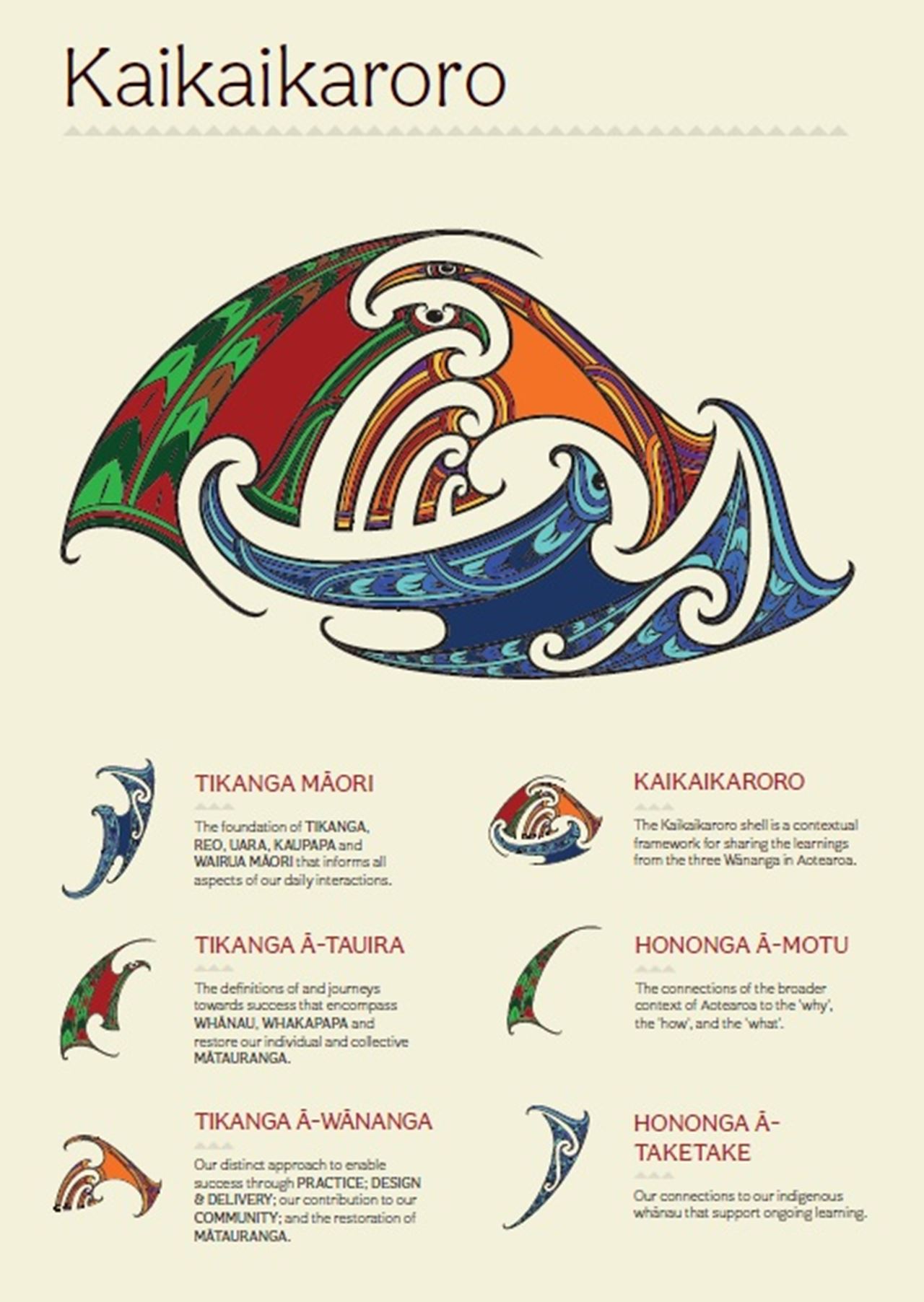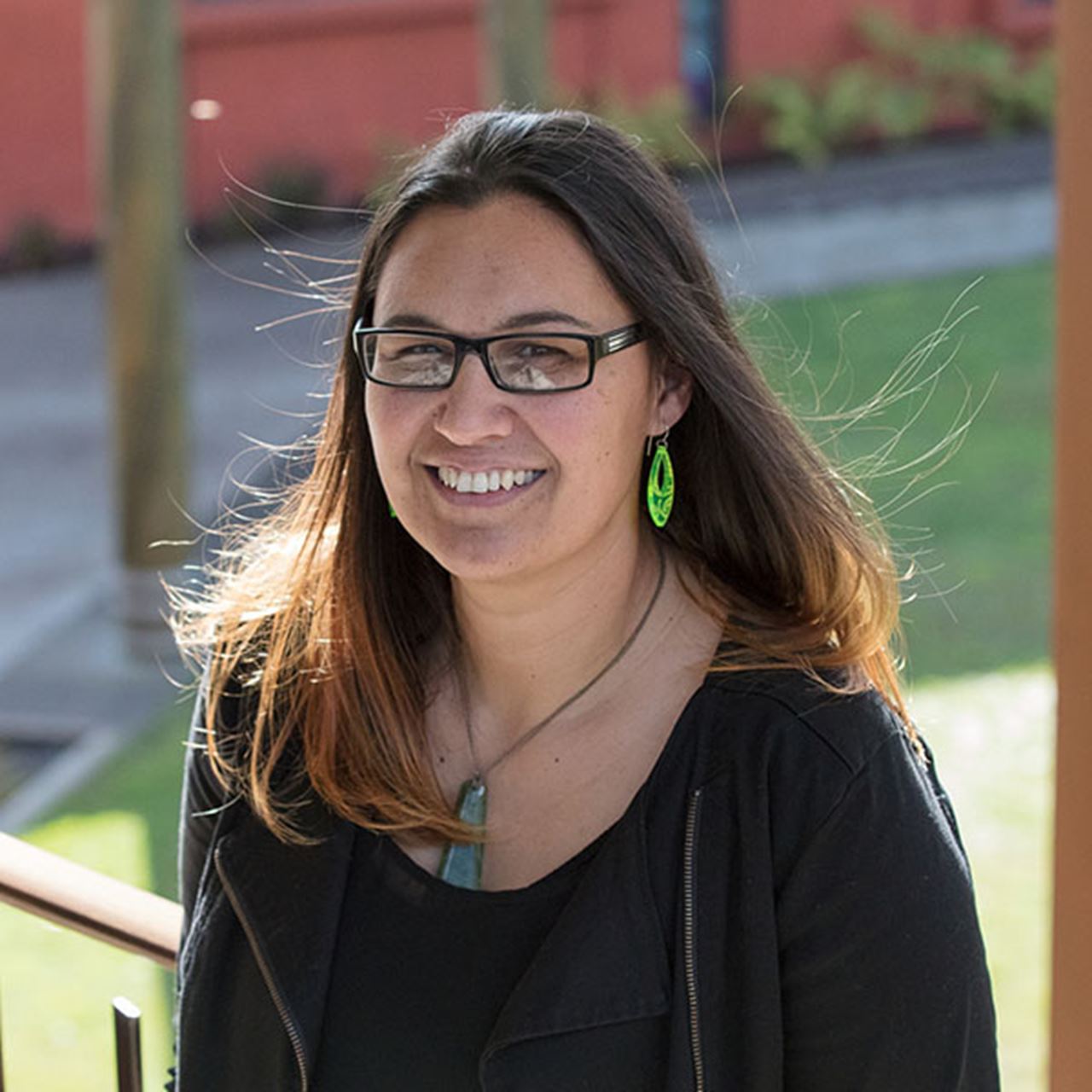Research sheds light on approaches that support tauira within wānanga to succeed
Research on the experiences of staff and students at Te Wānanga o Raukawa, Te Wānanga o Aotearoa and Te Whare Wānanga o Awanuiārangi has led to the development of a framework that could be used by others who are exploring opportunities to better support Māori tauira and whānau.
‘Kaikaikaroro – Enhancing Student Success: The Learnings from Wānanga’ is the culmination of a three-year, $300,000 research project that has been jointly funded by Ako Aotearoa and Te Whare Wānanga o Awanuiārangi. It shares the experiences and stories of those within the three wānanga to better understand what supports Māori tauira within tertiary education. In doing so, it identifies key strategies that are working effectively for tauira and kaimahi.
Principal Investigator Hannah Simmonds says she embarked on the research because she is passionate about Māori education and understanding what factors contribute to improving the educational experiences of Māori tauira .
“I want to better understand what success for Māori means in education — and most importantly, I want to dissect how we can work collectively to ensure Māori across the system are served well,” explains Hannah.
”My research led to the development of the ‘Kaikaikaroro framework’ – a model which locates five key themes which are critical to achievement in the kaupapa Māori space: Tikanga Māori, Tikanga ā-Tauira, Tikanga ā-Wānanga, Hononga ā-Motu, and Hononga ā-Taketake.
“The hope is that this research can provide other educational organisations who are looking to improve how they serve their Māori students, with some guidance and examples of what works,” says Hannah.
Key research findings
- The ideas and definitions of ‘success’ must fundamentally be shaped from a Māori world view –we must consider how language, culture and identity play into our ideas of success, and importantly, this must contribute to how we measure success within education.
- Student success in education, and particularly for the students within the three Wānanga, are all linked to whakapapa, whānau and the ability to contribute back to our communities in meaningful ways.
- Excellent provision for Māori in tertiary education acknowledges and values te ao Māori, te reo Māori, tikanga Māori, and provide opportunities for all participants in the organisation to understand the wider context of Aotearoa. For example, the impacts of colonisation on the Māori education experience, the importance of Māori centred approaches to teaching and learning, and nurturing ongoing conversations about Te Tiriti, equity and the collective movement of Māori education.
- The three wānanga in Aotearoa — through some common approaches but also through their own unique contexts and practices — provide excellent opportunities for Māori (at the individual, whānau and community levels) to experience success in ways that contribute to the collective good of Aotearoa.
Ways the Wānanga support student success include:
- Grounding everything they do in te ao Māori – including te reo Māori, tikanga Māori, and Māori values and kaupapa strongly informing everyday practice (including teaching and learning). This also includes having kaimahi who are leaders themselves within their own whānau and hapū and who are able to role model Māori leadership through te reo and tikanga. This plays into the ‘movement’ of kaupapa Māori education – and the recognition by Wānanga that they are doing more than just educating individuals, but working towards a different type of experience for all Māori.
- Celebrating the wide-ranging types of success that their students experience – including graduations that celebrate both academic achievement and cultural identity (e.g., Te Wānanga o Aotearoa graduations across the country within communities); involving whānau in achievement and success (the collective impact) and acknowledging the whakapapa of success for students (reconnection to their own marae and whānau, as an example).
- Tailoring their courses and delivery to meet the needs of their student demographic – such as online and noho style delivery options that allow working people to retain employment while studying; marae-based courses to meet the needs of individual whānau and hapū; and multiple campuses across the country that are meeting the specific needs of the community they serve.
Hannah says she was extremely grateful for the opportunity to lead this kaupapa and highly valued the time and generosity of every participant involved. Including the CEOs of each Wānanga, tauira and kaimahi, and all those who supported the research process and provided feedback at each stage.
“I am thankful to Te Whare Wānanga o Awanuiārangi, Te Wānanga o Aotearoa and Te Wānanga o Raukawa who provided support through their ongoing expertise — including advisors available throughout the course of the project — and manaakitanga when we had to travel to their various campuses for hui and data collection.
“Importantly, through this research I also learned more about the importance of a ‘by Māori, for Māori’ approach. What it looks like in practice, and how the courageous work and leadership of those who established movements such as Kōhanga Reo, Kura Kaupapa Māori and Wānanga, has contributed to the educational development of our people,” says Hannah.

Kaikaikaroro Research Framework

Hannah Simmonds, Principal Investigator on the project
Whakapā mai/Contact us
For more information about this research project please contact us
Te Kani Kingi
- Phone: 0508 92 62 64
- Email: TeKani.Kingi@wananga.ac.nz